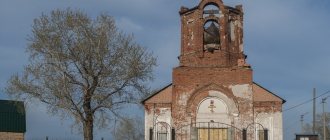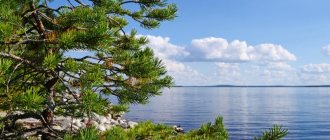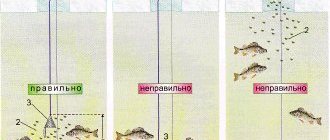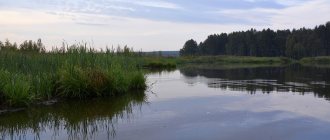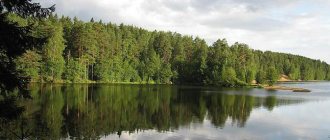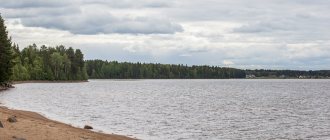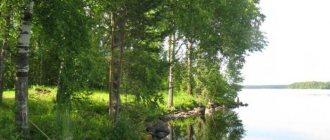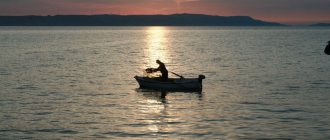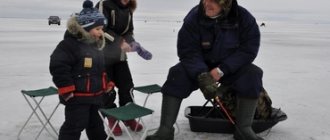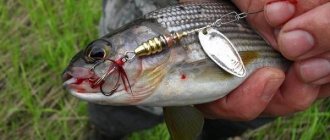Lake Vyalye
holy74 added this place Nov 6, 2017
Location coordinates: 59.0607, 30.2172
The Leningrad region can rightfully be called the land of lakes. There are about one thousand eight hundred of them in the region. There are both large reservoirs here: Ladoga, Onega, and not so big. Lake Vyalje is a medium-sized lake. Hidden among difficult, dull swamps and magnificent green forests, it shimmers like a mirror under the rays of the sun, and the air, filled with the aromas of herbs, seems crystal. It attracts a person with its silence and solitude.
Peculiarities
Vyalye (translated as “vast”) is a reservoir located not far from St. Petersburg in the Gatchina region on the territory of the federal reserve “Mshinskoye Swamp”, in a hard-to-reach place. The length is about nine kilometers with a width of just under four kilometers, the greatest depth is about nine meters. The bottom of the lake is without depressions, peaty, covered with silty masses. The shores are not high, often low and swampy, indented by numerous bays and bays. It has an elongated shape from the north to the south and is connected to Lake Strechno by a small strait, forming, as it were, a single body of water with a total area of about thirty-six square meters.
The origin of the reservoir is glacial. The water is clear and clean, with a bluish tint, despite the high degree of swampiness on the banks.
The coastline, which in some places smoothly turns into a swamp, is covered with a variety of vegetation. The main representatives of the flora are pine, birch, silver willow, spruce, alder, heather, sedge, reed, cotton grass, reed, cloudberry, horsetail, and here and there a water lily. In nineteen hundred and twelve, the Tuscarora plant (Canadian wild rice) was sown on the reservoir. Now huge areas are occupied by its crops; it serves as excellent food for waterfowl, of which there are many species: goldeneye, shoveler, black loon, mallard, goose, pintail.
Fishing on Lake Vyalye
One of the advantages of the reservoir is that there is practically no access to it and due to little competition and the number of fishing enthusiasts, fish can easily and freely reproduce. Here you can find about twenty species of ichthyofauna:
You can fish anywhere if you have your own watercraft. Only the western sandy part of the coast is suitable for fishing from the shore and setting up tent camps; the rest of the territory is swampy and unsuitable for these purposes. The most successful fishing spots are considered to be the coastline of the island of Big Reul and in shallow water in quiet bays with good vegetation. There are very large pikes, crucian carp and perches. The gear you can use is a fishing rod, spinning rod, etc. Fish can be caught in the pond all year round.
Nature has generously endowed this corner, untouched by human hands, not only with amazing beauty, but also with a variety of mushrooms and berries: blueberries, blueberries, cranberries.
All Seasons
This is a lake of glacial origin, and the water, despite the swampy shores, is clean and transparent. They say you can drink it straight from the lake. Its history goes back centuries and remains covered in legends and secrets. But it’s worth visiting at least once. The Russian forest is rustling all around, the depths are full of fish, and on the shore there are countless mushrooms and berries. Hunting enthusiasts can go on a hike to hunt elk, bear or wild boar.
The climate here is wonderful, close to the sea. It is very soft and healing. Summers are sunny and cool, and winters are warm. In the sunny months, the water warms up to 25 degrees, but most often it is not very comfortable for swimming. But in the cold season there is a haven for lovers of winter fishing. You can sit with a fishing rod all day and not freeze. Therefore, after the first snow, amateurs and professionals rush to Lake Vyalye. Fishing, reviews of which are very tempting, becomes a real hobby here.
But the best time to visit these places is in the fall. The forests are glowing with gold, the weather is pleasing with its last warmth, there is an abundance of mushrooms and berries along the banks, and there is a special peace and quiet on the water.
How to get there
By private car we leave Moscow along the M-11 highway in the Tver direction. Through Khimki, Klin, Torzhok we get to Zizino, in the area of which we get onto the M-10 and past Valdai we get to Novoselitsy, where we again change lanes onto the M-10. Leaving Veliky Novgorod behind, in the village of Trubichino we go out onto highway 49A-04, through Kromy we reach Luga, there we make an exit at 41K-141 and continue driving past Tolmachovo to Mshinskaya, we leave on R-23 and end up in the village of Luzhki, Gatchinsky area in the vicinity of which Lake Vyalje is located.
From St. Petersburg you can get to the lake by rail:
· From Vitebsky station by train to the village of Chaschi and further west along a country road on foot for about eight kilometers;
· from the Baltic station by train to Mshinskaya station, then through the dachas along the road in an easterly direction, then along paths through the swamp.
Vyalye Lake
Vyalye and Strechno are lakes in the Luga and Gatchina districts of the Leningrad region. The lakes are of glacial origin and are located in the complex federal reserve “Mshinskoye Bog”.
There are no roads to the lakes . The lakes are difficult to access; they can only along paths through the swamps , which are located near the lake. During the dry season, you can get there by all-terrain vehicle, but the risk of getting stuck remains. In winter , it’s a little easier - on a snowmobile or on foot . This secluded location makes the lakes very attractive. You can drive up to the “Chascha” station, from the village along a forest road, along the “Swamp Ditch” indicated on the map, through wooded and swampy areas. The journey takes about 3 hours. In winter, a more or less passable winter road runs from Chasha, ending two kilometers from Vyalye at the forester’s hut. Further, the only passage is through the swamp. The second option is from the Mshinskaya station to the village. Meadows, and from there about 3-4 km along a clearing and 2 km through a swamp. The hardest thing is to cross the peat bog for about 2 km, taking into account the load on your shoulders, the journey takes about 3 hours. on a hike to the lakes with a guide or using a navigator with a laid out route; the places are remote and swamps in some places are impassable.
The length of Lake Vyalye is 8.3 km, width - 3.5 km, maximum depth - 9 m. The lake stretches from north to south and is connected to the neighboring Lake Strechno by the Strait. The length of Lake Strechno is 7 km, width is 4.3 km. Both lakes form one body of water with an area of 35.8 km2. The shores of the lake are low, swampy, indented by bays and bays, the bottom is flat, peaty, covered with silt. Coastal vegetation is sparse; pine, spruce, birch, alder, and willow grow. The banks are overgrown with reeds, horsetail and sedge. In some places the shore smoothly turns into a swamp. Many species of ducks nest on the lake, and there are geese and black loons.
The lakes are home to large perch and pike, as well as roach, crucian carp, ruffe, and tench. Most of the fish are found near the island of Big Reel. Catches of pike up to 10 kg and more, perch up to two kilograms have been recorded. Fishing from the shore is difficult - the area is too swampy. Sandy elevated areas suitable for parking are only on the western side. The bite is good, but sometimes it seems that the fish has gone somewhere. Pike is caught with spinning rods using spinners and silicone, as well as with live bait gear - girders and mugs. Perch bites on spinners and traditionally on maggots and worms. In May, while the coastal vegetation has not yet grown, large crucian carp bite on worms along the banks. In winter, the best bite is on the first or last ice, the shallow lake freezes and death is frequent.
Fishing in Lake Vyalye
The water here is clean and completely transparent. While sailing on a boat, you can admire the leisurely life of the inhabitants of the depths. The bottom is sandy, but sometimes there is silt. There are so many fish here that you can make a professional’s cherished dream come true. And what can we say about the amateur? The catch will greatly depend on the fishing gear and skills, but you definitely won’t be left without fish soup. About 20 species of fish are found here, including pike, bream, pike perch and perch. Sometimes you manage to catch a tench.
For an avid fisherman, the best reward for a hard journey will be the captured trophy. How wonderful it is to light a fire on the shore and cook aromatic fish soup, or even bake meat over coals! Such a dish at a forest site will be remembered for a long time.
Types of fish that are found in this reservoir:
Lake Vyalye is located on the territory of the Gatchina district of the Leningrad region. The lake is of glacial origin, located on the territory of the complex federal reserve “Mshinskoye Bog”.
The length of the reservoir is 8.3 kilometers, the maximum depth is 9 meters. Lake Vyalje stretches from the northern part to the southern part. It is connected by a strait to the nearby Lake Strechno, so that the lakes form one body of water with an area of 35.8 square kilometers.
The shores of the reservoir are swampy and low, indented by numerous bays and bays. The bottom of the lake is flat and peaty, covered with silt. Coastal vegetation is insignificant. Pines, spruces, birches, alders, and silver willows grow here. The banks are overgrown with reeds, sedges and horsetail. In some places the banks smoothly turn into a swamp.
The lake is difficult to access; it can only be reached along paths through the swamps, which are located near the lake.
The lake is home to many species of ducks: mallard, goldeneye, connection, teal, pintail, shoveler and others. In addition, black loons and geese are also found. Beavers can be seen on the reservoir, and in 1950, 53 black-brown muskrats were released into Lake Vyalye. Here they took root well and multiplied. It should be noted that the muskrat is under the protection of the reserve. The lake is home to perches, pikes and ruffs. About 90 different species of plants grow on the reservoir and its banks - sphagnum mosses, cloudberries, cotton grass, cranberries and blueberries, heather, low marsh pine and others. Water lilies are found in certain places.
A special feature of the flora of the reservoir is wild Canadian rice (Tuscarora), sown here in 1912 by the Russian scientists Generozov. It forms interesting ring thickets that cover a large area and is eaten by various waterfowl.
During the war, there was a partisan base near the lake, from where attacks were carried out on the nearest railway station, where enemy ammunition warehouses were located. The Nazis' attempts to liquidate the base were not successful.
Around the lake
3
The places here are truly fabulous. If you decide to visit Lake Vyalye for the first time, then prepare a camera, you will definitely need it. Around the lake there is Russian nature, forests and bushes. Moreover, the vegetation is very interesting for its heterogeneity. Here is a willow, there is a birch, between them are spread the luxurious paws of pine and spruce. Alder can also be found from time to time. But getting to the water is not easy. There are reeds and reeds around the shore. Most of the slopes to the water are very swampy, so you will have to choose a place for swimming quite carefully. There are special paths that are well known to experienced fishermen. Lake Vyalye is a unique ecosystem; geese and ducks live here, and beavers build their huts.
Walking route to Lake Vyalye. July 2014
My health didn’t allow me to go out on a bike this weekend, but I didn’t want to sit at home, so I came up with the idea of going for a walk to Lake Vyalye. Most of the things were carried by Sasha, I carried a small backpack. Since I realized at the last moment, the route turned out to be not particularly inventive - just a walk from Chasha station to Lake Vyalye, spend the night there and return. The mileage is also quite small - 27 kilometers. We walk briskly, but I can’t walk for a long time; my toes, feet and back hurt. So the walking time turned out to be short - we set out on the route in the middle of the day, spent a long time relaxing on the lake in the evening, and the next day we boarded the train at 4. I hope to continue the examination as soon as possible
